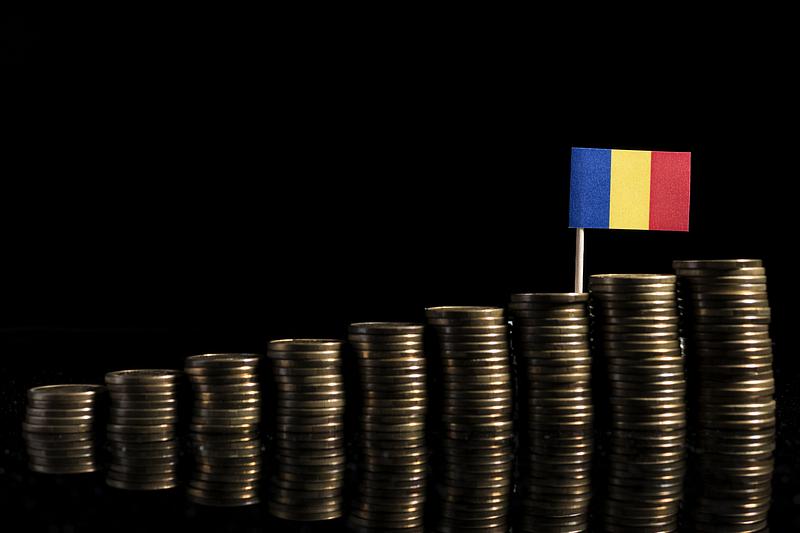Romania’s economy slows down in Q2 prompting analysts to cut their forecasts

Romania’s gross domestic product (GDP) went up by 1.1% in the second quarter (Q2) of 2023 compared with the same period of last year. The growth rate was significantly lower than the 2.4% level recorded in the first quarter, according to flash data released by the National Statistics Institute (INS) on Wednesday, August 16.
The GDP growth rate in the first half of the year was 1.7% compared with the same period of 2022.
“Looking at today's data, one thing is clear: the Romanian economy is slowing more than expected. Therefore, we are revising our 2023 GDP forecast lower from 2.5% to 1.5%,” commented Valentin Tataru, ING’s Chief Economist for Romania.
Meanwhile, Erste Bank’s analysts pointed to the discrepancy between the gross indicators and the seasonally adjusted ones. According to the INS report, when adjusted for the number of working days and seasonality, Romania’s GDP was 2.9% higher in the second quarter compared with the same period of 2022, which is significantly more than the 1.1% growth reported in the gross series.
“There is a significant gap between the unadjusted real GDP growth rate and the seasonally adjusted reading (1.1% y/y vs 2.7% y/y), which is hard to explain so far, given the released economic data. We believe that the historical GDP time series will probably be subject to additional revisions by the NIS as additional data becomes available. We see agriculture as a possible source of positive surprise,” Erste’s analysts wrote in a comment.
Weaker consumption and declining industrial production
While the INS flash report doesn’t provide details about the sectors that contributed to the economic slowdown, the analysts see weaker consumption and industrial production as possible explanations.
“Some information on growth drivers has been revealed in the high-frequency data available for the second quarter. It shows that it’s been a pretty weak time for consumption, as retail sales have contracted by 0.5% versus the previous quarter. Industrial activity has been contracting as well, by 2.8%, one of the largest quarterly contractions in a while. Constructions is also losing speed as the available data point to quasi-stagnant activity, while some marginally better numbers can be seen in the services sector where there could be a 2-3% quarterly expansion. Investments and net exports are likely to have contributed positively to second-quarter growth,” explained Valentin Tataru.
Analysts expect slower growth in 2023 followed by rebound in 2024
“We’ve had a long-standing GDP growth forecast of 2.5% for 2023. While the detailed data due on September 7 might shed a different light on the growth dynamic, we are already revising our 2023 GDP growth forecast to 1.5%, while maintaining 2024 at 3.7%. Depending on the specifics of the budget revision due later this month, risks might be skewed slightly to the downside,” ING’s Chief Economist concluded.
ING’s forecast also takes into account the fact that Romania’s National Bank (BNR) is not yet contemplating the timing for a dovish pivot, despite the more frequent dovish statements coming from other central banks in the region. “We maintain our view of a first rate cut in the first quarter of 2024 with a key rate of 5.5% by the end of 2024.”
Erste Group’s analysts also expect Romania to see economic slowdown in 2023 followed by a rebound next year. “For 2023, we continue to expect the GDP growth to slow down to +2.1% y/y, as external demand is seen dropping, while household consumption should remain the main contributor to growth, but it should add less relative to 2022. Investments are also expected to support GDP growth this year, since EU funds inflows from both the Multiannual Financial Framework and Next Generation EU could climb to 4.0-5.0% of GDP in 2023 vs. 3.5% of GDP in 2022. We also forecast a rebound in GDP growth for 2024 to 4.2% y/y,” reads Erste’s note.
The Austrian group’s analysts also expect Romania’s National Bank to keep the monetary policy rate unchanged at 7% until mid-2024, “given the tight labor market and strong real wage growth expected over the next couple of years.”
Romania’s annual economic growth stood at 5.8% in 2021 and 4.7% in 2022.
editor@romania-insider.com
(Photo source: Dreamstime.com)













